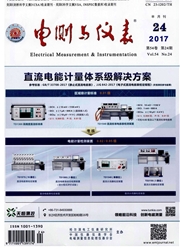

 中文摘要:
中文摘要:
短期负荷预测中,影响用电量的因素众多,传统方法在其中作选择时,仅考虑每个因素与负荷的相关性,不考虑因素之间也存在相关性,造成选取的因素组合中存在相关性冗余和重叠。其次,传统聚类分析中,欧氏距离不能很好的度量负荷曲线形态上的相似性。因此,首先通过欧氏距离与余弦相似度混合度量,对负荷特性曲线聚类。然后,用信息论方法在9种影响因素中选取最优的组合,考虑了影响因素相互之间的相关性。最后,将与待预测用户同类的用户的负荷及其关联因素数据作为训练样本,建立支持向量机预测模型。通过对上海某地实际样本数据的分析,证明该方法预测结果平均相对误差为1.46%,相对误差控制在1%以内的概率达到72.72%,具有较好的实用性。
 英文摘要:
英文摘要:
The electricity consumption is affected by many factors in short-term load forecasting. In traditional method of associated factors selection, only the correlation between load and associated factor is considered, and the correla- tion between factors is ignored, which leads to the correlation redundancy. Besides, the Euclidean distance can't measure the similarity of the load curves well in the traditional cluster analysis. So, firstly, cluster analysis based on Euclidean distance mixed with the cosine similarity is made on the load curves. Then, information theory is used to select the optimal associated factors combination from 9 factors, which has considered the the correlation between fac- tors. Finally, load data and its associated factors data to be used are selected according to the classification of the load to be predicted, and the data is adopted to establish the support vector machine (SVM) model. Through the analysis of the actual sample data in a certain area of Shanghai, the results prove that the average relative error of this method is 1.46%, and 72.72% of the relative errors are below 1%, which has a better practicability.
 同期刊论文项目
同期刊论文项目
 同项目期刊论文
同项目期刊论文
 期刊信息
期刊信息
